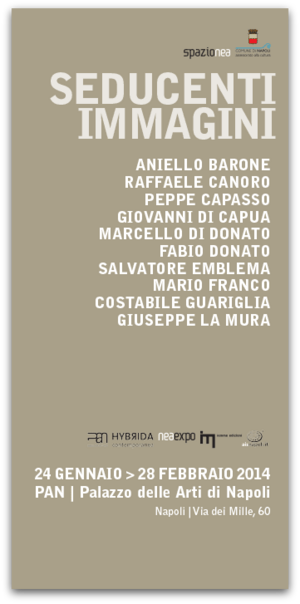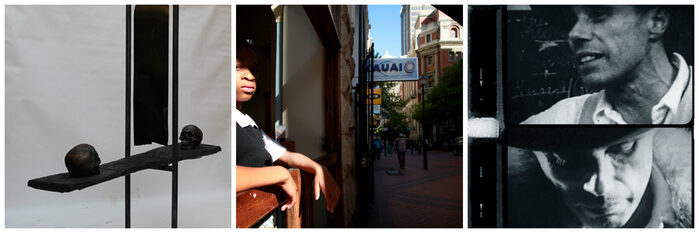
- clicca per ingrandire
The collective art exhibition "Alluring Images", organized and curated by the contemporary art gallery Spazio Nea with Alfonso Amendola,and in collaboration with the Department of Culture and Tourism of Naples, will be inaugurated on Friday, January, 24th at 6.00 p.m. in the rooms at the first floor of Palazzo delle Arti di Napoli.
The exhibition will be open until February, 28th everyday, except on Tuesdays, from 9.30 am to 7.30 pm and on Sundays from 9.30 a.m.to 2.30 p.m. Free admission.
The exhibition is theproduct of a critical survey on contemporary art, moreover it is the result ofa series of exhibitions that took place in Naples in 2013. The artists ondisplay are the most representative on the national scenario and each one ofthem is characterized by a distinctive way of expressing art. The sixty paintings and photographs of the exhibition try to "seduce" visitors, dragging them into a story where they become the new protagonists.
In Raffaele Canoro's paintings the subjects represented are grotesque masks that cleave the darkness by a dim light. They grop in the dark lookingfor "clarity" and the answer is hidden in their expressions. In this representation the man shouts "light" to run away from dormancy, from a doziness, on the other hand, in GiovanniDi Capua's works the man is an unchangeable "alienated puppet", who is absent to himself and to the rest of the word and whose actions are manipulatedby "invisible hands". The only element that can determine a contact withreality are the chiaroscuros.
In Costabile Guariglia's work the journey crosses the menacingcharacter of human being and the erotic pulsion is kept in its ancestral essence.
The sense of insecuritycharacterizes Salvatore Emblemas's canvas, it is like "...an attempt to undo and agreement with life",on the other hand, Peppe Capasso'sprotagonists are fragility and transience, in his works the contrast between a narcissistic attachment to the body and death is disintegrated and the only surviving element is an irreparable nonsense.
This representation could becompared to Aniello Barone's photos,where liners destroy the wonderful landscape of the Campania Felix. Urban landscapesare immortalized by Mario Franco as well, "in a soft tech ecstasy with asacral background, that determines the sacrifice of the new collectiveaffectivity" (A. Rainone).
